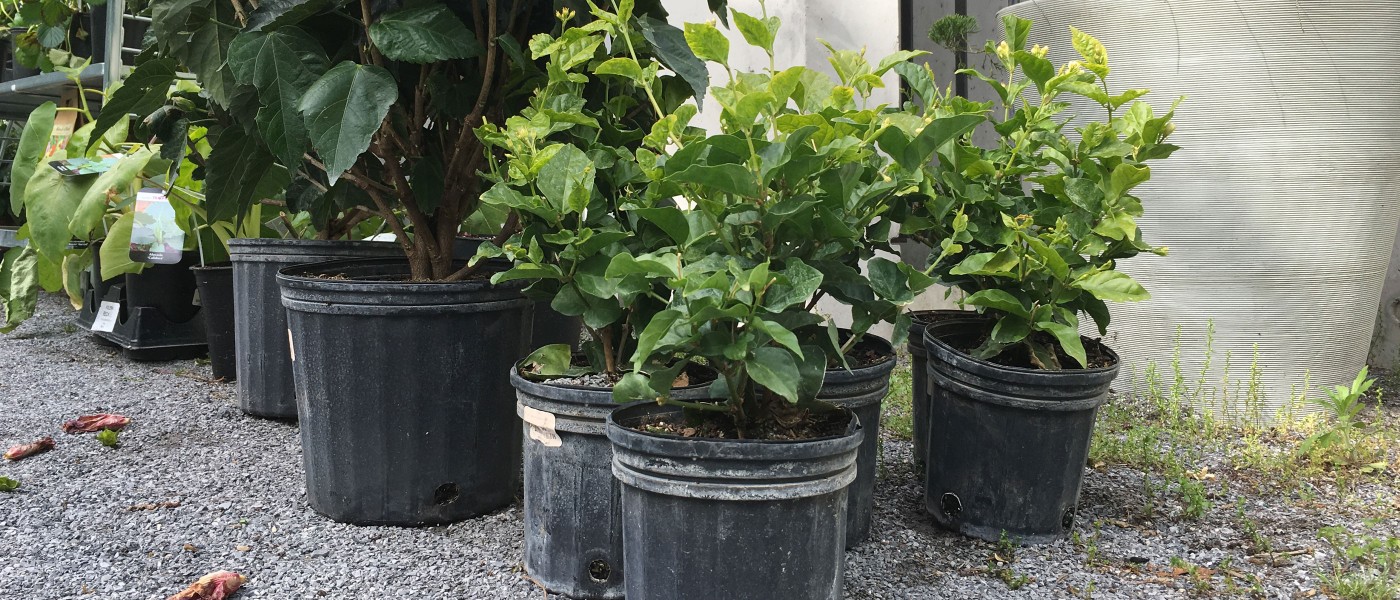Planting a Potted Tree or Shrub in Your Garden
Caring for a tree (or shrub) is a long-term commitment. Choosing a site, preparing the soil, and placing the plant in the ground correctly are key for getting your tree off to a good start. Planting in spring or fall allows the plant time to acclimatize and root before the intense extremes of summer and winter. After planting your new tree, keep it regularly and thoroughly watered for two to three years, until it is established.
Choose a Site
Look for a spot that has enough sun and the right soil for your plant. The nursery tag on the plant or its container should list light and soil requirements, or look them up for your plant online. In Brooklyn, lime from the surrounding cement hardscape tends to leach into the soil, making it alkaline. Test the soil and amend it if necessary. Learn about how to test your soil, especially if contamination is a concern.
Dig the Hole
Make a hole in the ground about three times the width of the plant container and no deeper than the pot’s height. The biggest mistake people make is to dig a deep, narrow hole. Dig too deep, and the roots can’t get enough oxygen for good growth. Too narrow, and the roots can’t spread out enough to nourish and anchor the tree. Rough up the sides of the hole with a fork, loosening the soil so the roots will be able to push through into the surrounding dirt. To test for proper depth, set the pot in the hole. The top of the container should sit slightly above the lip of the hole. If needed, backfill enough soil to raise it.
Prepare the Plant
Remove the tree from the container by gripping it near the base of the trunk and gently tipping over the pot. (Don’t try to pull the plant out by the trunk.) Tap the sides of the container to loosen it, and gently let the root ball slide out. Check the roots. If they are tightly compressed, gently tease them open and spread them out. If the plant’s roots are pot-bound and circle the plant, use a spade or trowel to open up the bottom half of the root system, cutting through fine rootlets if necessary. Failure to loosen the roots can lead to their girdling and killing the tree.
Get It into the Ground
Your tree should be transplanted no deeper than the soil in which it was originally grown. The root flare of the tree should not be covered by soil, so be sure to uncover it if it was buried a bit too deeply in the nursery pot. A gently tapering root flare at the base will eventually grow into a strong root plate to support the tree as it ages—and avoid the lollypop look of a buried trunk. Set the tree or shrub in the hole, making sure that the root flare and crown of the plant is two inches above the soil line. This will leave room for the tree to settle. Backfill the hole around the roots with soil, and gently compress it using your hands or the back of your shovel. Don’t overpack the soil by trampling it with your feet. Water the tree and mulch to a depth of two to three inches, being careful to keep the mulch away from the root flare or trunk.
Mulch and Water
Keep your new tree mulched to maintain soil moisture and suppress weeds, but make sure it’s clear of the trunk and root flare, which are vulnerable to rot and insect damage. For the first couple of years, as the tree establishes itself and develops new roots, never let it dry out. Water the tree whenever the first couple of inches of topsoil feel dry, and give it a periodic deep watering, especially in times of drought.



